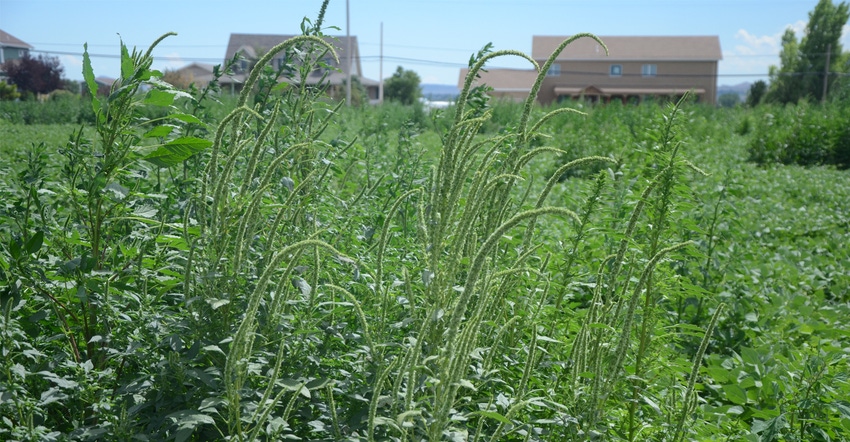
It may not be as prominent as weeds such as marestail or waterhemp, but Palmer amaranth was identified in the Cornhusker State as early as the 1800s. Most of those acres are in the eastern half of the state, but it's also becoming a problem in the western part of Nebraska.
"Some producers may have a couple pivots that are really bad, and some are just seeing it on the edge of their farm field, but it's definitely in the area," says Nevin Lawrence, Nebraska Extension integrated weed management specialist at the Panhandle Research and Extension Center in Scottsbluff. "In our area, we've confirmed resistance to ALS and glyphosate."
And managing Palmer amaranth in western Nebraska is a different ballgame. The diverse crop rotations there create a double-edged sword when it comes to weed control.
"The problem in western Nebraska is there are less herbicide options available for crops like dry beans, sugarbeets or sunflowers compared to corn or soybeans in eastern Nebraska,” Lawrence says. “Because of our diverse rotations, when we have corn in the rotation, herbicides carry over to more sensitive species. With those rotations, we have a lot less herbicide options, but that diversity also helps prevent resistance because you're planting and harvesting crops at different times of year. It's not an easy question to answer."
For corn in these rotations, there are several options for preemergence applications — including group 8 herbicides such as Prowl, group 15 herbicides such as Outlook, Dual, Warrant and Zidua, as well as PPO inhibitors such as Sharpen and Valor. However, for postemergence applications in corn, there aren't many options — HPPD inhibitors such as Lumax and Balance, as well as atrazine and various premixes, all have carryover restrictions for dry beans and sugarbeets.
"For preemerge, we have plenty of options,” Lawrence says. “But when you talk about post options, we're only working with 2,4-D and dicamba. That puts a lot of pressure on those herbicide modes of action. If we were to have a resistant biotype to those herbicides occur, which we're seeing with other weed species, we'd have no more post options for corn."
In more sensitive crops such as field peas and dry edible beans, there are good preemergence options for Palmer control, but like corn, they are reliant on a few options for postemergence applications.
"Postemergence, both of those crops are very reliant on the herbicide Raptor, an ALS inhibitor — and Palmer is largely resistant to that as well,” Lawrence says. “That limits the options for those two crops. In sugarbeets, we don't have any herbicides other than glyphosate that we can apply postemerge to control Palmer. So, we're very restricted."
That paints a somewhat grim picture for Palmer control in western Nebraska, but with diverse rotations such as those found in the Panhandle, crops are planted and harvested at different times of the year — meaning crops are canopying and suppressing weeds at different times of the year.
Research conducted by Lawrence has shown that diverse rotations are one of the biggest factors in delaying, or even preventing, herbicide resistance from spreading.
"Palmer can emerge as early as late April in our area,” Lawrence says. “So, it's really going to be a problem in all of our crops. But for corn, where we have good preemerge options, it's still possible to get good weed control from a herbicide program and crop canopy closure. The other one is wheat. If you're growing wheat, you'll have canopy closure before Palmer even has the ability emerge."
However, introducing a new crop to the rotation can be a tough sell.
"The reality is, you can't just tell a farmer to plant a new crop, because there's something called economics," Lawrence says. "At the end of the day, you have to have a market for crops."
Cover crops are one way to provide diversity without needing a market for a new crop — although Lawrence notes there are several questions to be answered specific to growing cover crops in semiarid western Nebraska, such as termination and planting date, and water use.
"We're not able to control Palmer with herbicides alone in western Nebraska,” Lawrence says. “It's not just that it's important to take an integrated approach, it's that it's all we have left. We're seeing that through targeted crop rotations, taking advantage of herbicide chemistries that are still effective, tillage strategies when appropriate, or the use of cover crops or cereal rotation crops, we may be able to get a better amount of control over it. It gives us our best chance of control moving forward."
About the Author(s)
You May Also Like






